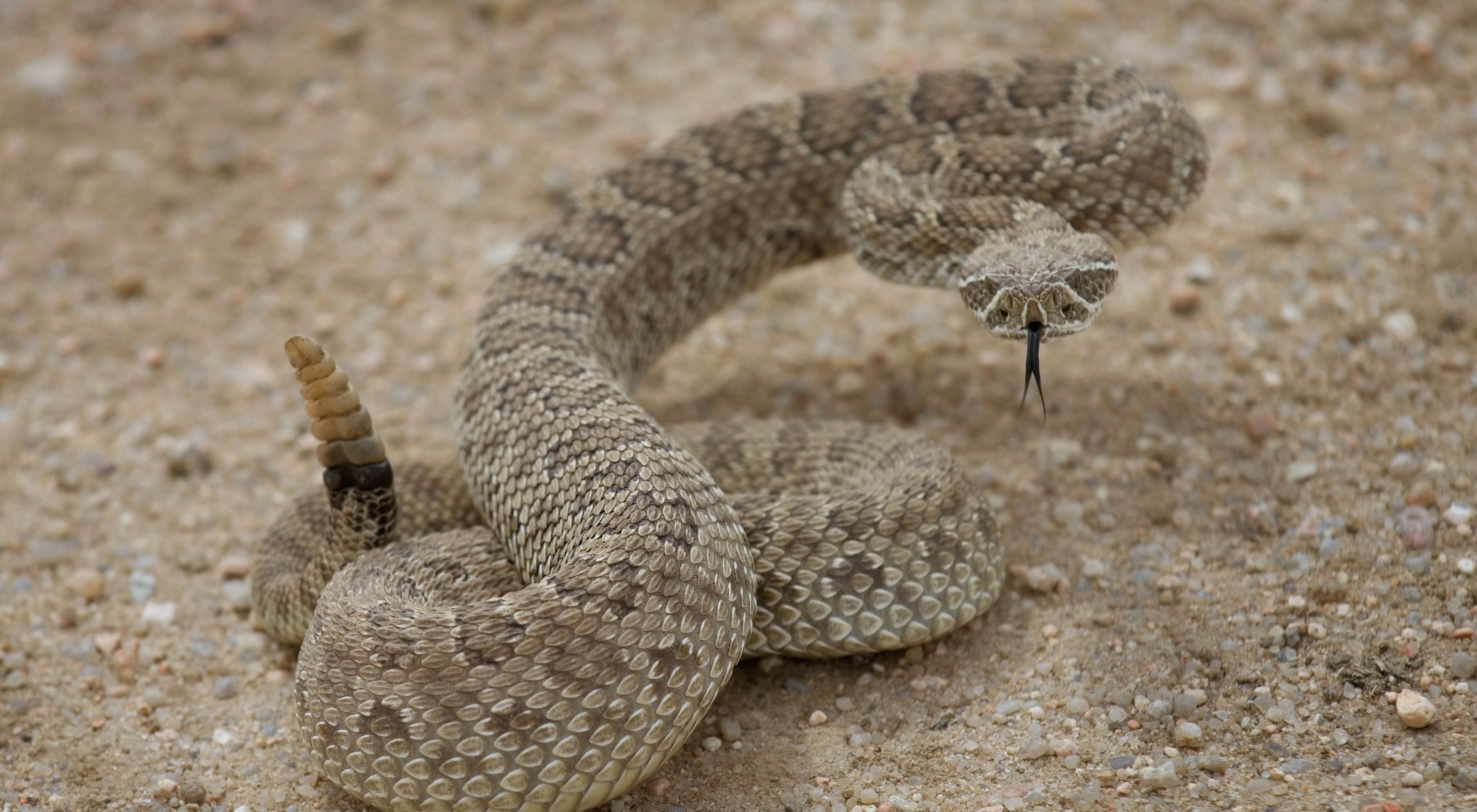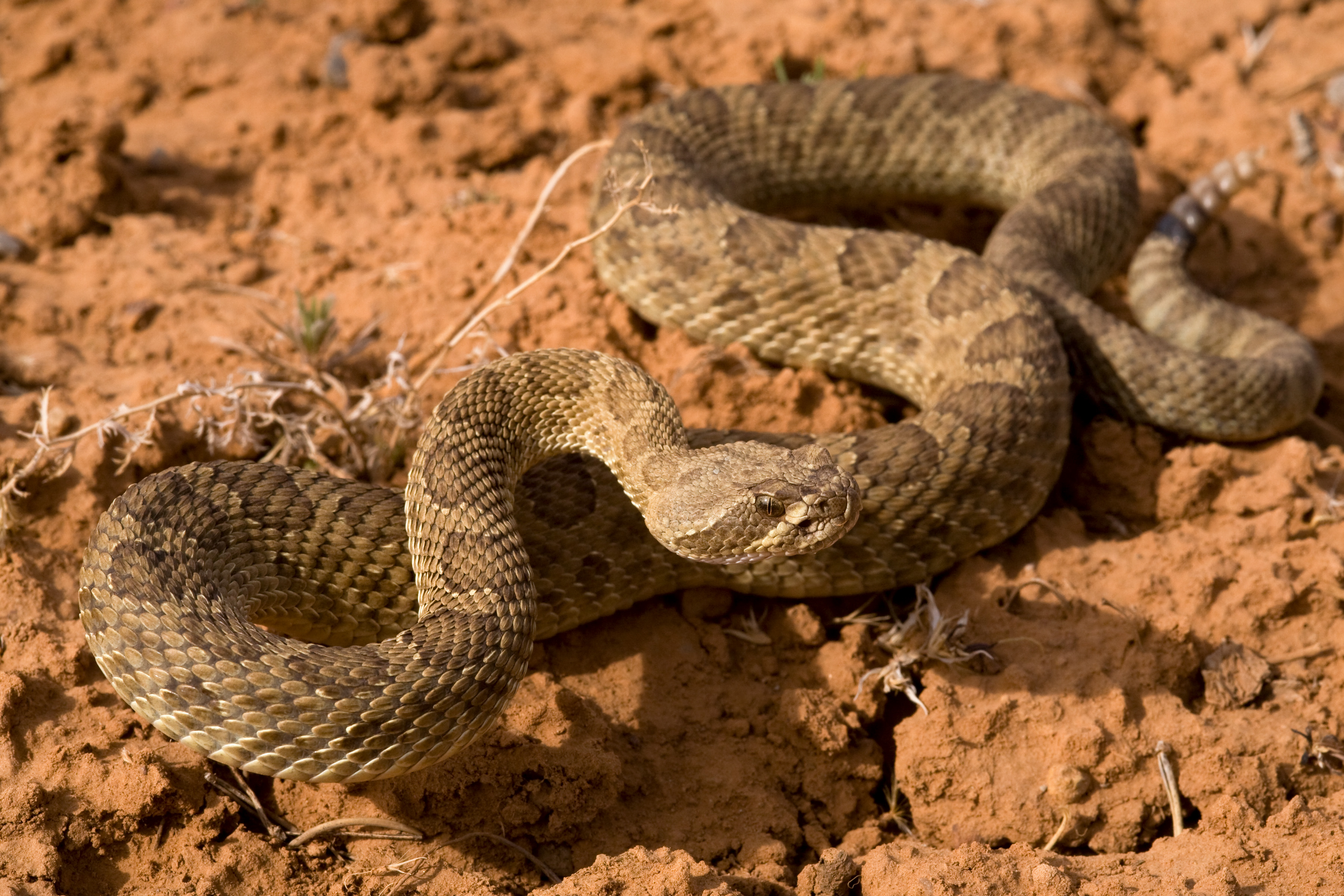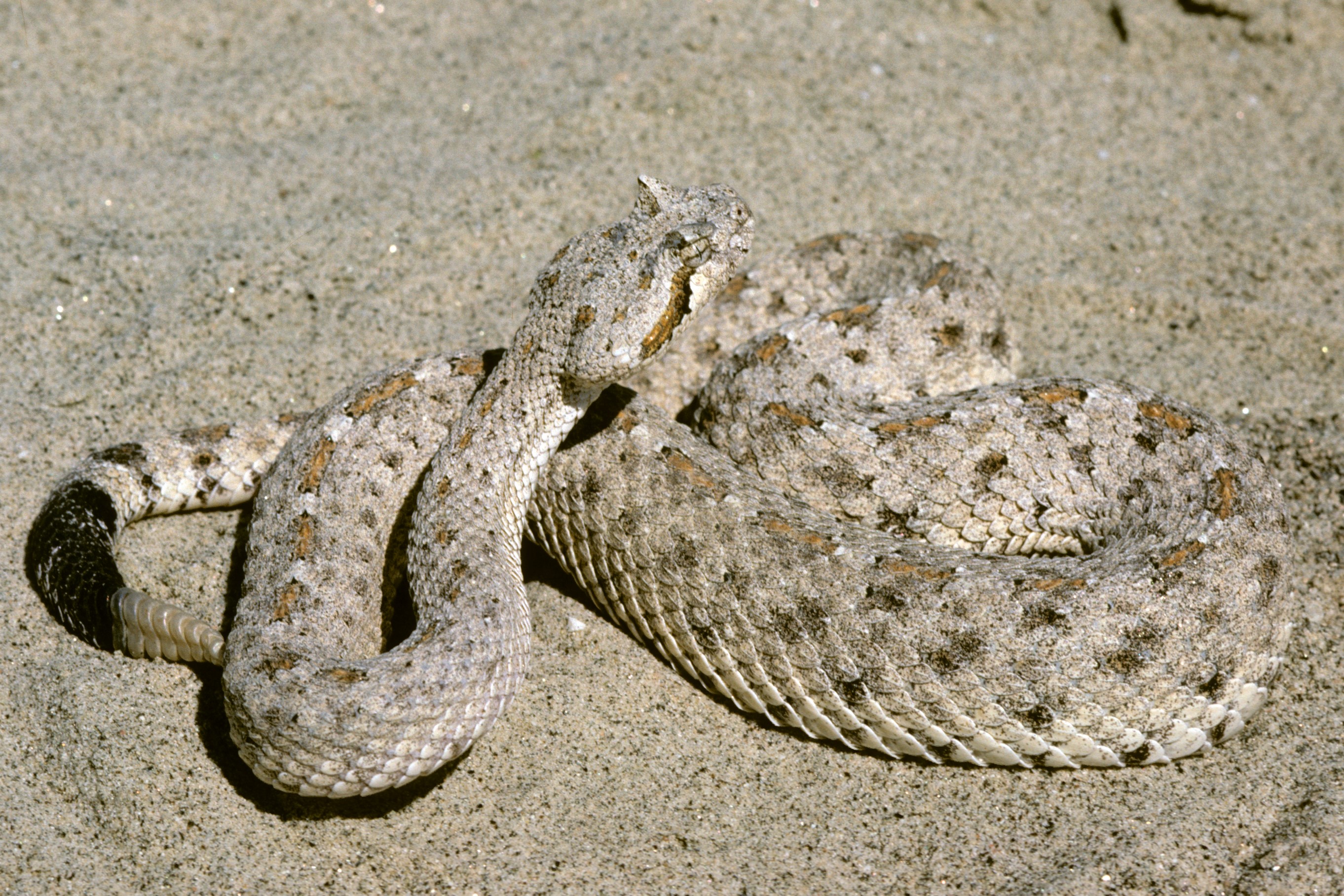Utah is home to a diverse range of wildlife, including several species of rattlesnakes. These venomous reptiles are an important part of the ecosystem, but it’s important to know how to identify them and stay safe if you encounter one.
In this article, we will explore the seven types of rattlesnakes found in Utah, including their physical characteristics, habitats, and behaviors. We will also provide tips on how to stay safe and what to do if you encounter a rattlesnake.
You are reading: Discover The 7 Types Of Rattlesnakes In Utah
Whether you’re a Utah resident or planning a visit to the state, this guide will help you stay informed and prepared.

7 Types Of Rattlesnakes In Utah
Mojave Rattlesnake (Crotalus scutulatus)
The Mojave Rattlesnake (Crotalus scutulatus) is a highly venomous pit viper species found in the deserts of the southwestern United States and adjacent central Mexico. It is also known as the Mojave green rattlesnake or Mohave rattlesnake.
The Mojave Rattlesnake is perhaps best known for its potent neurotoxic-hemotoxic venom, which is considered the world’s most potent rattlesnake venom. The color of the Mojave Rattlesnake varies from shades of brown to pale green depending on the surroundings.
The green hue found among these snakes has led to them being known as “Mojave greens” in some areas. They have a dark diamond pattern along their back and wide white bands on the tails.
Additionally, they have enlarged scales on top of the heads between the supraoculars, and the light postocular stripe passes behind the corner of their mouths.
The Mojave Rattlesnake is found in the southwestern United States in southern California, southern Nevada, northern and eastern Nevada, extreme southwestern Utah, most of Arizona, southern New Mexico, and some of Texas.
Prairie Rattlesnake (Crotalus viridis)

Read more : Discover The Top 10 Sneakiest Animals In The World Today
The Prairie Rattlesnake (Crotalus viridis) is a venomous pit viper species native to the western United States, southwestern Canada, and northern Mexico.
The Prairie Rattlesnake is also known as the Great Plains rattlesnake. The Prairie Rattlesnake is a relatively large rattlesnake, with adults ranging between 45.3 and 165 cm in length and weighing 227 to 361 g. They have a light brown to black tint on their dorsum and a yellow underbelly.
The color of the Prairie Rattlesnake can vary depending on the environment. They have a triangular head, blunt nose, narrow neck, and stout body.
The Prairie Rattlesnake is found in environments ranging from 100 to 2700 feet in elevation and in settings that are rocky or rugged, as well as open fields that are heavily populated with prey.
They are also found in forests because of the forest debris on the ground that can be used for protection. The Prairie Rattlesnake is a solitary animal and is known for its distinctive tail rattle.
Great Basin Rattlesnake (Crotalus lutosis)
The Great Basin Rattlesnake (Crotalus lutosis) is a venomous pit viper species found in the Great Basin region of the United States, which includes parts of Utah, Nevada, and California.
Here are some key facts about the Great Basin Rattlesnake:
Description:
– Adult specimens are 66–121 cm (26–48 in) in overall length, but rarely exceed 1 m (3 ft 3 in) .
– They have a light brown to grayish-brown coloration with dark blotches on their backs.
– They have a triangular-shaped head and a rattle on their tail.
Habitat:
– The Great Basin Rattlesnake inhabits rocky hillsides, barren flats, sagebrush, grassy plains, and agricultural areas.
– They are found in a variety of habitats including grassy, shrubby, and rocky areas.
Behavior:
– The Great Basin Rattlesnake is a pit viper and is venomous.
– They inject their toxins into their prey using long, sharp fangs.
– These snakes are ambush predators and will sit and wait for their preferred prey to come across their path before making the move to strike.
Conservation Status:
– The Great Basin Rattlesnake is classified as “Least Concern” by the International Union for Conservation of Nature (IUCN) .
– They are unprotected in the state of Nevada.
It is important to be aware of the Great Basin Rattlesnake’s presence if you are in their habitat and to take precautions to avoid being bitten.
Speckled Rattlesnake
The Speckled Rattlesnake (Crotalus mitchellii) is a venomous pit viper species found in the southwestern United States and northwestern Mexico. Here are some key facts about the Speckled Rattlesnake:
Description:
– Adult specimens are typically between 24 and 30 inches in length, but some individuals can reach almost 36 inches.
– They have a light brown to grayish-brown coloration with black speckles forming indistinct crossbars or dorsal blotches across the back.
– The color of the Speckled Rattlesnake can vary depending on the environment, often matching the earth tones of the rocks and soil it inhabits.
– They have a triangular-shaped head and a rattle on their tail.
Habitat:
– The Speckled Rattlesnake inhabits rocky hillsides, barren flats, sagebrush, grassy plains, and agricultural areas.
– They are found in a variety of habitats including grassy, shrubby, and rocky areas.
Behavior:
– The Speckled Rattlesnake is a pit viper and is venomous.
– They inject their toxins into their prey using long, sharp fangs.
– These snakes are ambush predators and will sit and wait for their preferred prey to come across their path before making the move to strike.
Subspecies:
– There are three subspecies of the Speckled Rattlesnake: the San Lucan Speckled Rattlesnake (C. m. mitchelli), the Panamint Speckled Rattlesnake (C. m. stephensi), and the Southwestern Speckled Rattlesnake (C. v. pyrrhus).
It is important to be aware of the Speckled Rattlesnake’s presence if you are in their habitat and to take precautions to avoid being bitten.
Hopi Rattlesnake
The Hopi Rattlesnake (Crotalus viridis nuntius) is a venomous pit viper subspecies native primarily to the desert plateau of the northeastern portion of the American state of Arizona, but also ranges into northwestern New Mexico and southern Utah. Here are some key facts about the Hopi Rattlesnake:
Description:
– The Hopi Rattlesnake is the smallest subspecies of C. viridis, with adults reaching a length of around 2 feet.
– The color of the Hopi Rattlesnake is variable and may be pink, gray, or orange-brown in color, matching the soil and rock of its habitat.
– They have a triangular-shaped head and a rattle on their tail.
Habitat:
– The Hopi Rattlesnake occurs on the desert plateau of northern Arizona and New Mexico and southern Utah.
– They are found in rocky areas, grassy plains, and agricultural areas.
Behavior:
– The Hopi Rattlesnake is a pit viper and is venomous.
– They inject their toxins into their prey using long, sharp fangs.
– These snakes are ambush predators and will sit and wait for their preferred prey to come across their path before making the move to strike.
Conservation Status:
– The Hopi Rattlesnake is not currently listed as a threatened or endangered species.
Read more : 10 Types Of Pond Turtles
It is important to be aware of the Hopi Rattlesnake’s presence if you are in their habitat and to take precautions to avoid being bitten.
Western Rattlesnake
The Western Rattlesnake, also known as the Northern Pacific Rattlesnake (Crotalus oreganus), is a venomous pit viper species found in western North America from the Baja California Peninsula to the southern interior of British Columbia. Here are some key facts about the Western Rattlesnake:
Description:
– The size of this species varies greatly, with some populations being stunted and others growing very large.
– Mainland specimens often reach 100 cm (39 in) in length, with the largest on record being 162.6 cm (64.0 in) for C. o. oreganus.
– They have a light brown to grayish-brown coloration with dark blotches on their backs.
– They have a triangular-shaped head and a rattle on their tail.
Habitat:
– The Western Rattlesnake inhabits a range of habitats from rural to urban areas, including rocky hillsides, barren flats, sagebrush, grassy plains, and agricultural areas.
– They are found in a variety of habitats including grassy, shrubby, and rocky areas.
Behavior:
– The Western Rattlesnake is a pit viper and is venomous.
– They inject their toxins into their prey using long, sharp fangs.
– These snakes are ambush predators and will sit and wait for their preferred prey to come across their path before making the move to strike.
Conservation Status:
– The Western Rattlesnake is not currently listed as a threatened or endangered species.
It is important to be aware of the Western Rattlesnake’s presence if you are in their habitat and to take precautions to avoid being bitten.
Sidewinder

The Sidewinder (Crotalus cerastes) is a venomous pit viper species belonging to the genus Crotalus, and is found in the desert regions of the Southwestern United States and northwestern Mexico. Here are some key facts about the Sidewinder:
Description:
– Adult specimens measure between 43 and 76 cm (17 and 30 in) in length, with most adults being 50–80 cm (19.5–31.5 in) in length.
– They have a light brown to grayish-brown coloration with dark blotches on their backs.
– They have a triangular-shaped head and a rattle on their tail.
– Sidewinders are distinguished among rattlesnakes by their horn-like superocular scales on their heads.
Habitat:
– Sidewinders reside in terrestrial, desert landscapes such as sandy washes, sand dunes, and the open terrain of warm deserts.
– They are highly concentrated near mammalian burrows—close to sandy washes and thickly vegetated areas.
– Sidewinders live in areas ranging from deserts below sea level to 1830 m.
Behavior:
– The Sidewinder is a pit viper and is venomous.
– They inject their toxins into their prey using long, sharp fangs.
– These snakes are ambush predators and will sit and wait for their preferred prey to come across their path before making the move to strike.
– Sidewinders get their name from their unique form of side-stepping locomotion that is an adaptation for moving across loosely packed desert sands.
Conservation Status:
– The Sidewinder is not currently listed as a threatened or endangered species.
It is important to be aware of the Sidewinder’s presence if you are in their habitat and to take precautions to avoid being bitten.
FAQS
1. How many types of rattlesnakes are found in Utah?
There are seven types of rattlesnakes found in Utah.
2. What are the names of the seven types of rattlesnakes in Utah?
The seven types of rattlesnakes found in Utah are the Mojave Rattlesnake, Prairie Rattlesnake, Great Basin Rattlesnake, Speckled Rattlesnake, Hopi Rattlesnake, Western Rattlesnake, and Sidewinder.
3. Are all rattlesnakes in Utah venomous?
No, not all rattlesnakes in Utah are venomous. However, of the 31 different species and subspecies of snakes found in Utah, seven are venomous rattlesnakes.
4. What should I do if I encounter a rattlesnake in Utah?
If you encounter a rattlesnake in Utah, it is important to stay calm and keep a safe distance. Do not attempt to handle or approach the snake. If you are hiking, step back slowly and give the snake plenty of space to move away. If you are in a residential area, contact a professional snake removal service.
5. How can I identify the different types of rattlesnakes in Utah?
Each type of rattlesnake in Utah has unique physical characteristics, such as coloration and pattern. It is important to educate yourself on the different types of rattlesnakes and their identifying features to be able to recognize them in the wild.
Source: https://petstutorial.com
Category: Animals










